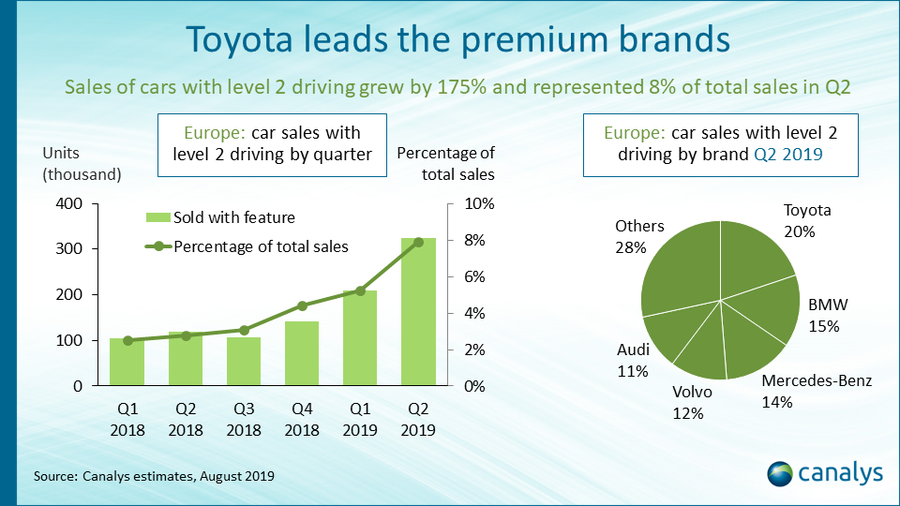Shanghai (China), Bengaluru (India), Singapore, Reading (UK) and Portland (US) – Monday, 09 September 2019
According to latest research from Canalys, 325,000 passenger cars sold withlevel 2 autonomy drivingfeatures in Europe in Q2 2019. Sales increased by an impressive 175% compared with Q2 2018. Level 2 autonomy driving features were in 8% of all new cars sold compared with just 3% in Q2 2018.
The growth was driven by mainstream car brands that include the feature, as standard or as an option, in new models.
“Toyota sold the most cars with level 2 driving functionality in Europe”, commented Chris Jones, Chief Analyst at Canalys. “It added a suite of ADAS (advanced driver assistance system) features, including level 2 driving as “Standard” in new models and overtook the premium car brands better known for having such technology. These include Audi, BMW, Mercedes-Benz, Tesla and Volvo.”

Just outside the top five car makers selling cars with level 2 driving functionality were several other mainstream brands Citroën, Ford, Hyundai, Kia, Mazda, Nissan and Peugeot.
“The penetration of advanced driver assistance and active safety features in new cars is increasing at a fast rate”, explains Jones. “Car makers have used the advanced features as differentiators in new cars – now they are seen as must-have features, and not just in cars from the premium brands.”

“However, car makers must clearly communicate the benefits of the level 2 driving features and drivers must use them as intended – these are not self-driving cars”, continues Jones. “The features must create a safer, more comfortable driving experience. If they don’t or if drivers do not trust the technology, they will not use it”, concluded Jones.
Level 2 Autonomy definition
The SAE (Society of Automotive Engineers) defines levels of driving automation. With level 2, the human driver must always be fully engaged and monitor the environment. Under certain conditions, the vehicle can take control of more than one driving function, such as steering and acceleration/braking, in combination. Examples of systems that meet the definition include AutoPilot from Tesla, Pilot Assist from Volvo and ProPILOT Assist from Nissan.
Email Newsletters
Sign up to receive TelecomTV's top news and videos, plus exclusive subscriber-only content direct to your inbox.



